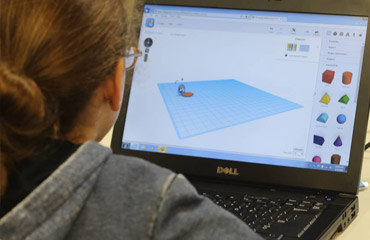Students gain familiarity with the field of digital design as they develop a series of projects including digital 2D games, storyboards, concept art, and animation sequences.
Students explore the field of digital design as they prepare to focus on either Game Design or Digital Animation in grades seven and eight. Students investigate the history of traditional animation, and discover that many of the pre-production techniques that were used prior to the advent digital media are still in use today. Students gain working familiarity with some of these techniques that are used in both game and animation planning, including narrative development and story boarding, by executing a series of flipbook assignments. Students then move on to more advanced pre-production techniques, creating their own concept art, character sheets, prop designs, and digital matte paintings. Students apply these techniques to the creation of their own 2D animatic. Finally, students apply what they’ve learned to the creation of a two-dimensional arcade-style video game using the Click Team Fusion game development engine.



